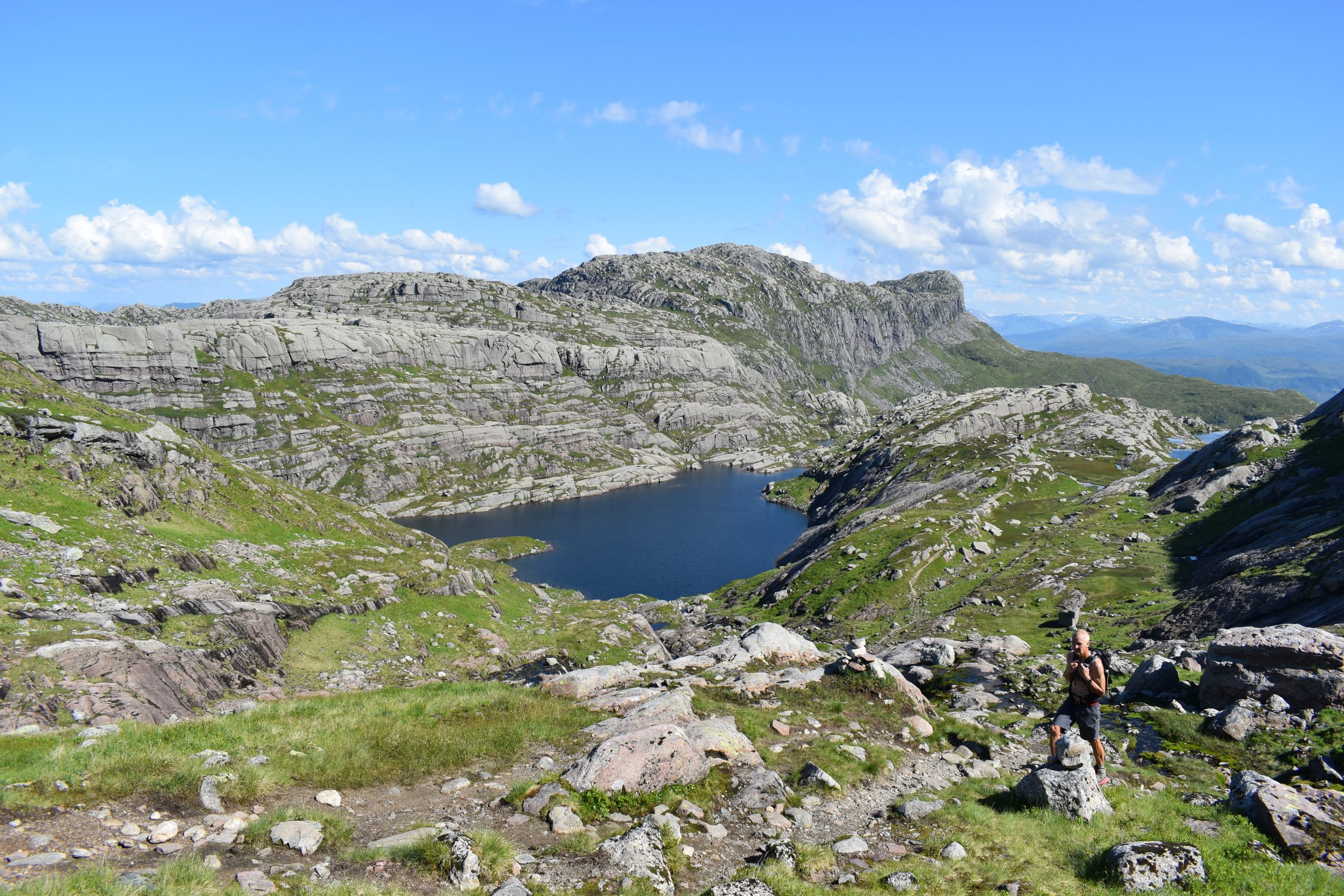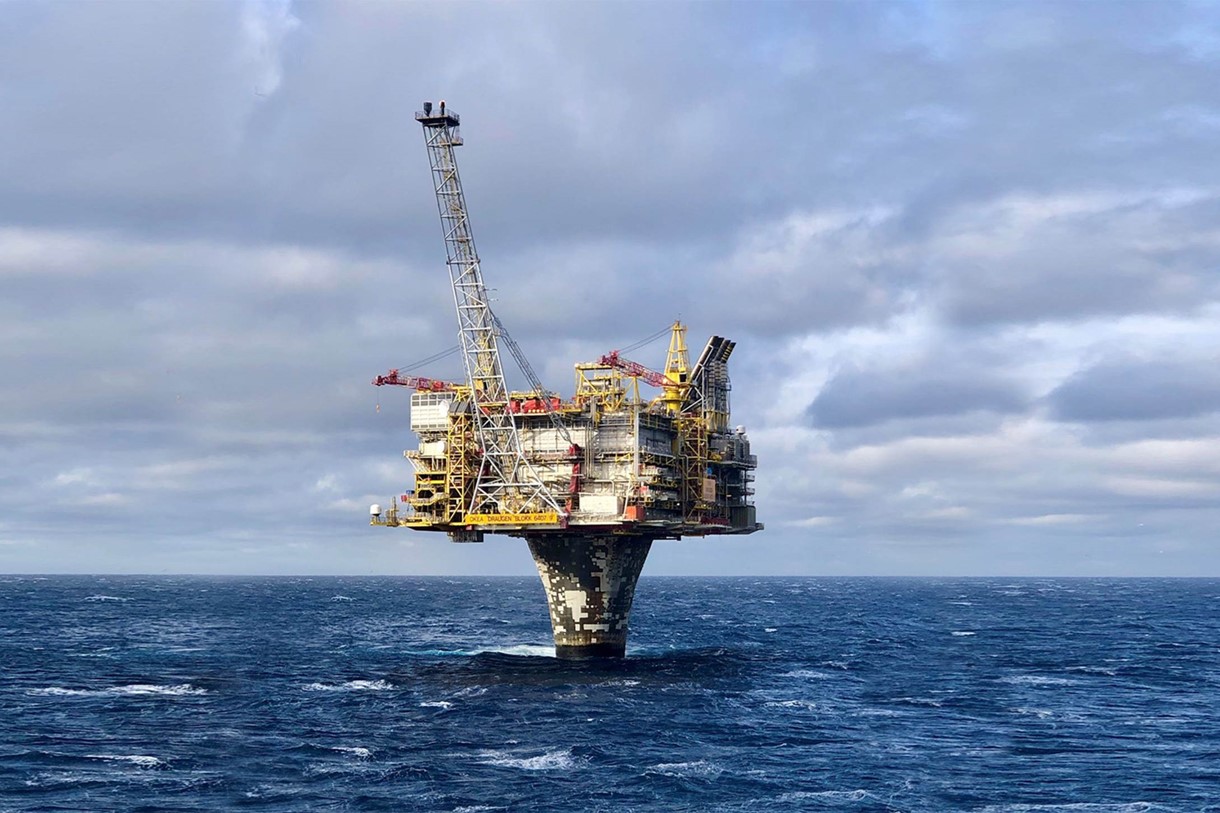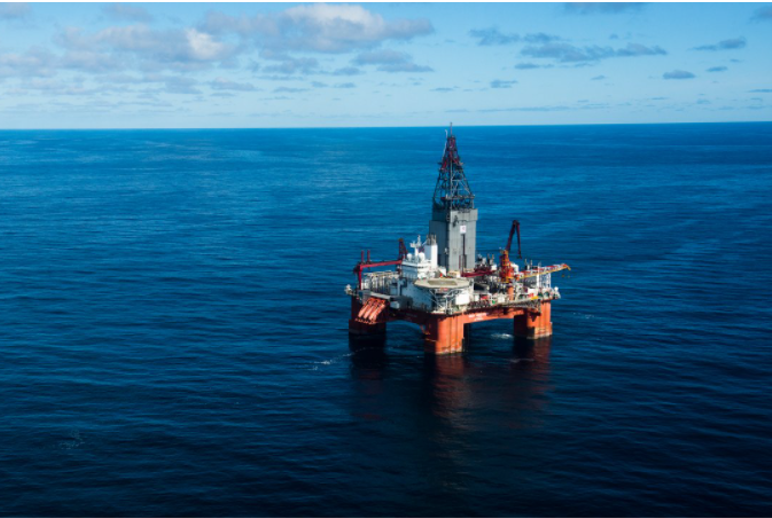“The secret is to drill deep, down to 1,500 meters,” points out Thor Erik Musæus, founder and CEO of the two-year-old company Geothermal Energy Nordic (GTML).
“The reason is that energy consumption increases exponentially with depth. One well at 1500 meters thus provides as much energy as 20 wells at 250 meters. In addition, we occupy a significantly smaller area, around ten square meters, than what is required with 20 shallow wells, which require 3-4000 square metres,” Musæus elaborates.
The starting point is that we waste electricity in this country. As much as 35-40 per cent of the renewable electricity (mostly hydropower, some wind power) is used for heating, and in 2018 this amounted to approximately 45 TWh. But that does not have to be the case. Rock heat can help replace electricity for heating. In this way, much of the hydropower can be used to a greater extent for new needs in the electrification of society.
“Right under our feet is a very promising source of energy, but it is never mentioned, and this despite the fact that the potential is great and the disadvantages are few, or almost absent,” says Sjur Talstad, COO of Geothermal Energy Nordic.
“The efficiency of heat extraction from geothermal heat increases with each degree as the temperature rises. Therefore, we look at local energy systems based on deep energy wells as a very interesting energy source and an important contribution to a renewable shift in Norway,” Talstad explains.
Read also: Geothermal energy from fractured “basement” – about an exciting geothermal project in Asker near Oslo.
“We have shown that we can”
Musæus and Talstad can talk about their passion for ages. The explanation is simple. The technology, industry and opportunities the two fronts develop can provide renewable energy with a new face. A face that few or no one will dislike.
“We have already shown that we can,” Musæus points out. The key word is the commercialization of “low temperature” geothermal energy.
“We are already utilizing geothermal energy,” most people will argue. That is correct, if we are talking about utilizing the geothermal heat at a depth of a few hundred meters. This refers, for example, to BI Norwegian Business School in Nydalen and the University Hospital in Akershus, which to a large extent depend on the energy stored a few hundred meters beneath their buildings.
But now it’s about taking a deep step further. The premise is that by drilling much deeper – down to 1,500 meters – the energy in the subsurface can be utilized much more efficiently.

Far down in the bedrock
The most important reference project we are working on are two energy wells at Oslo Airport from 2018 that extend down to 1500 meters underground, and where the temperature reaches 28°C at the bottom of the hole. Simply put, cold water is sent down, and hot water comes up after the ground heat under the ground has moved energy from the subsoil to the water. The water is then used to keep the intoxication pit ice-free during the winter months. The heat was previously supplied from an electric boiler. This saves large amounts of electricity.
So, technology works. It is quite possible to drill deep into the hard, Norwegian rocks, at an affordable price, and absorb large amounts of heat.
The solution is not technically complicated. With investment support from Enova, the projects will be competitive, and this support will be an important contribution to making the technology commercial. For the wells at Oslo Airport, it was Innovation Norway whi supported us, says Talstad.
“For Oslo Airport, the project represents a comprehensive energy efficiency. Consumption of power for the motor test area is greatly reduced and can be used for other purposes. We can achieve similar energy efficiency for football pitches, roads and sidewalks that need ground heat for de-icing in the winter,” says the civil engineer from NTNU who has spent much of his career at Statoil (today Equinor).
Therefore, there is no shortage of stakeholders. For example, the company is currently working on a number of football pitches where several sports teams have joined forces to study the use of geothermal heat instead of gas for their facilities.

Still large costs
It is the cost of drilling operations that prevent geothermal heat from rocks down to a depth of 1,500 meters to be fully commercial today. Everything else is off the shelf.
Therefore, it is precisely the drilling operations that the company is now trying to streamline.
“In order to be able to roll this out on a large scale, we need to standardize and industrialize drilling operations, and we are also working to make the drilling emission-free,” Talstad says.
Unfortunately, there is little help to be found outside the country’s borders. There are few places where deep geothermal wells have been drilled in bedrock. Instead, technology and expertise are sourced from the oil and gas business on the shelf. In that sense, the network they have is worth its weight in gold. They have worked in both oil companies and service companies and therefore know both technology and people.
That we utilize the expertise from the oil and gas business is, of course, something the politicians appreciate. It is good to know that Norwegian offshore technology is gaining ground when we know that one day the oil will run out.
“Geothermal energy, on the other hand, is renewable and perpetual. There will never be a question of liquidation,” Talstad points out.
The Svalbard project
The possibility was anticipated as early as 2015. In an article in geoforskning.no (“Is renewable geothermal energy an alternative for Svalbard?“), Kirsti Midttømme, who then headed the Norwegian Center for Geothermal Energy Research, writes that a temperature gradient of 30°C/km, in combination with permeable sandstones and fractured carbonate rocks, makes the subsurface on Spitsbergen suitable as a geothermal reservoir. The purpose of the study was to map the geothermal potential on Svalbard and was conducted under the auspices of Christian Michelsen Research, NORSAR and Store Norske with funding from the Research Council of Norway.
Five years later, it’s serious. Through a pilot project, it is being investigated whether the new high school building in Longyearbyen can be heated by deep rock heat based on the temperature gradient here being as high as 44°C/km.
There is even the vision that the entire village of Longyearbyen with its 2,500 inhabitants can be kept warm through the use of geothermal energy. In that case, the goal of an emission-free society in the Arctic will be significantly closer.
“The report already shows that geothermal energy can be competitive in relation to other energy sources. We want to move on, and if we get the financing in place, we may be able to drill the first pilot well as early as next year. Then we will look at opportunities for more deep wells that can supply the entire Longyearbyen with heat, currently in combination with the diesel generators that will replace the current coal power plant during 2023,” says Malte Jochmann, senior geologist at Store Norske.
“Together with Geothermal Energy Nordic, we are looking at the possibility of supplying hydropower through a closed system. Water from the surface is heated on the way down and up in the same hole, and that means that there is no form of interaction with the surrounding rock, only heat transfer, he adds. Thus, the technological risk is significantly less than in classical, open geothermal systems.”
The temperature of the water when it returns to the surface depends on the temperature of the water that is sent down, how fast it is pumped through the well and of course the temperature gradient.
Longyearbyen currently covers its heating and electricity needs with coal and diesel, but there is already existing infrastructure for district heating. Therefore, Jochmann sees great potential in the use of geothermal energy in Longyearbyen.
“Geothermal is the best solution for heating. The system is stable, all year round, and completely independent of sun and wind. In addition, operating costs are low and space consumption is minimal,” says the geologist at Store Norske.
“But first we have to show that we can by installing equipment in a pilot plant consisting of one or two wells, and then we need support,” from for example Enova. The challenge lies, amongst other things, in the need for a drilling rig designed for oil drilling on land, and it must be sourced from abroad.
The concept study was awarded NOK 800,000 by Enova and has a total budget of NOK 1.8 million. Store Norske is conducting the study together with UNIS and Geothermal Energy Nordic. The project participants are investigating drilling down to about 2,000 meters where they expect to measure temperatures of up to 80°C.
“We have to make it happen”
Renewable energy is on everyone’s lips. But everyone is talking about sun and wind. The opportunities that geothermal heat provides have gone under the radar. The new thing that Geothermal Energy Nordic stands for is drilling much deeper than what is common today. In this way, the heat output becomes significantly larger, whilst at the same time the area occupied by a project is considerably reduced.
“So, we have to keep in mind that geothermal heat is “finished heat” that does not bother anyone, concludes Thor Erik Musæus,” an optimistic entrepreneur who is completely convinced that the group he leads will make it happen.
But the government must also help while the technology is being commercialized. The potential is enormous and can really contribute to Norway being able to meet its emission targets.
Geothermal energy
Geothermal energy is heat energy from the Earth’s interior. It comes from “old” heat that was formed in the core and mantle when the Earth was formed 4.6 billion years ago, as well as from a continuous supply of heat energy from the decomposition of radioactive elements in the earth’s crust.
On average, the temperature increases by 25-30°C/km down in the earth’s crust. However, in active geological areas, preferably near plate boundaries, the gradient can be up to ten times higher. We therefore have the greatest potential for geothermal energy in countries such as Iceland, New Zealand, Indonesia, the Philippines and the United States.
With a high geothermal gradient, it is possible to reach the boiling point of the water without drilling very deep. This in turn means that it is possible to convert energy into electricity. But with the low geothermal gradients we have in our country, it is necessary to drill down to several thousand meters to reach 100°C, and it becomes too expensive with today’s technology. Therefore, it is more relevant to use the subsoil as a heat reservoir and transport it to the surface with water.
HALFDAN CARSTENS





